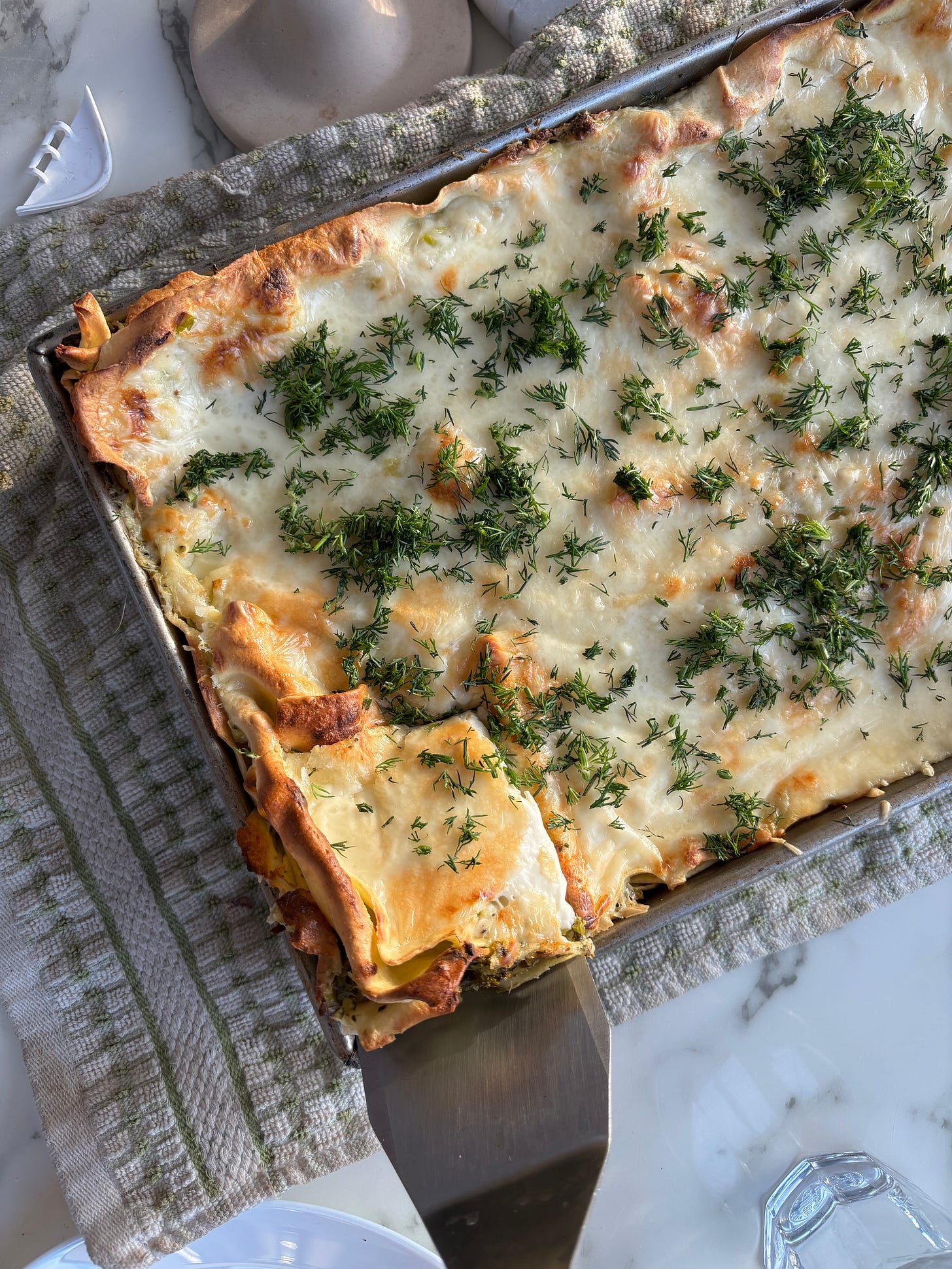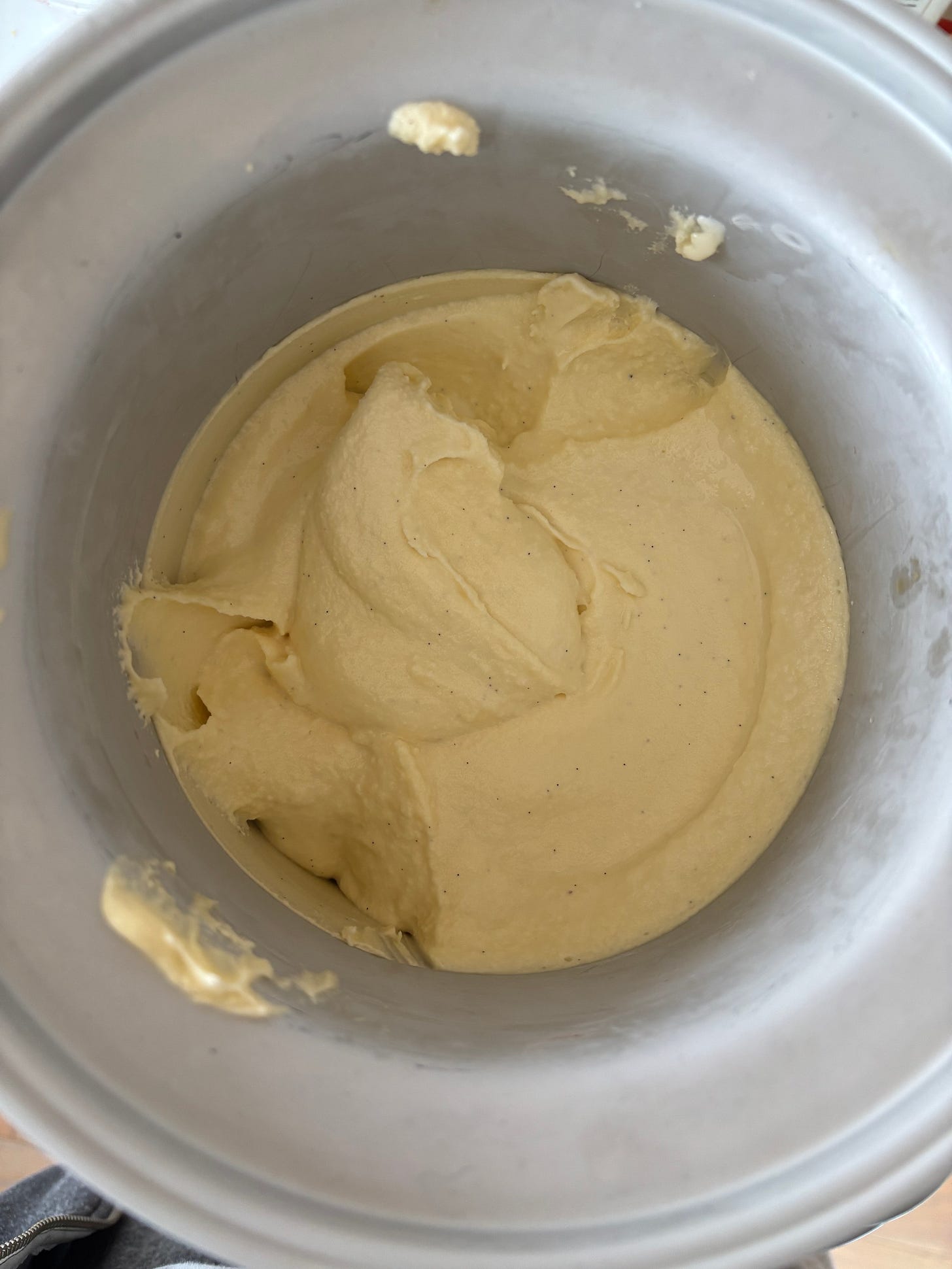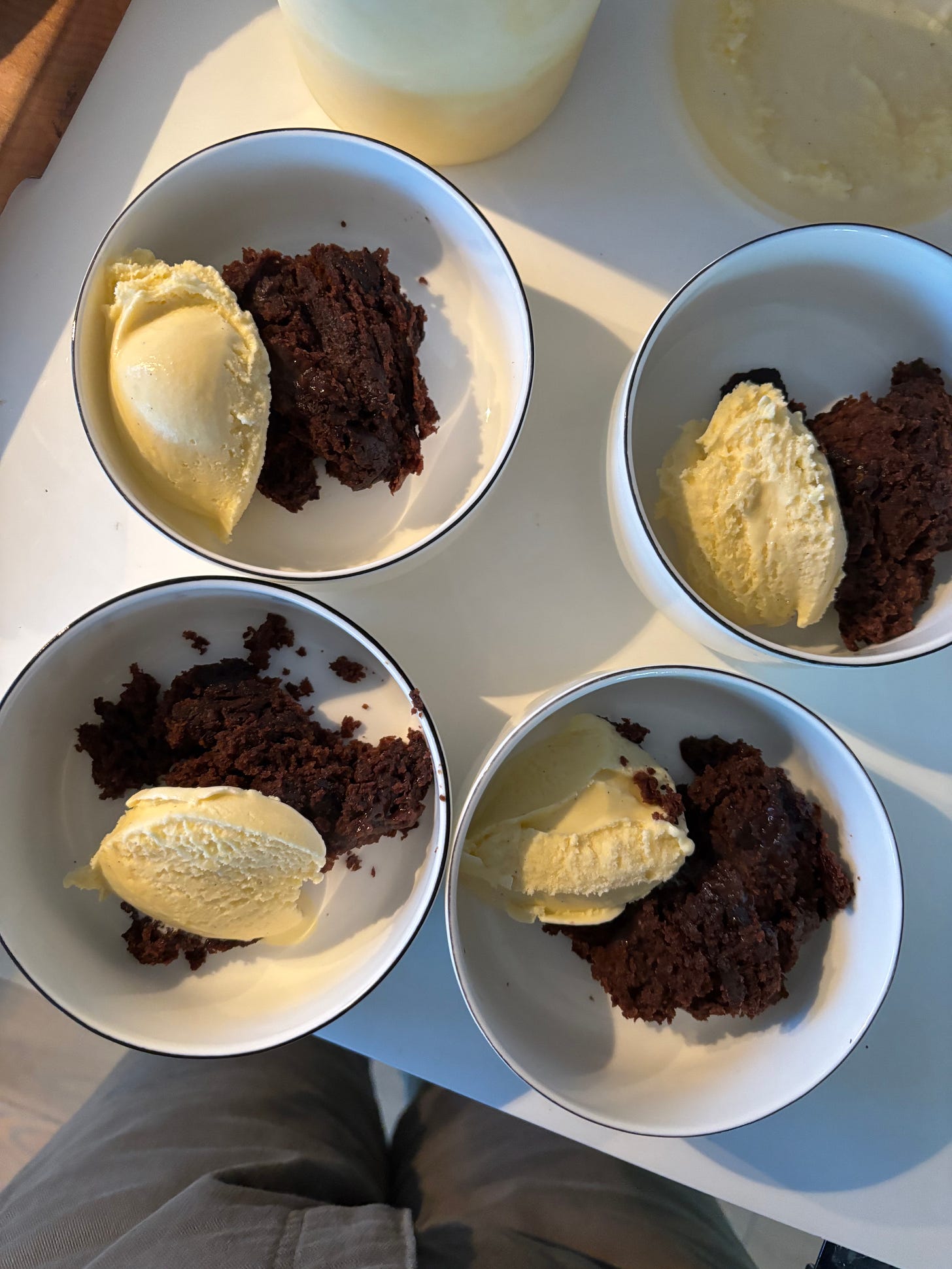Long time, no blog! This week, it was my turn to come down with some kind of mysterious, likely foodborne illness, which really put a damper on my ability to organize words into sentences, not to mention my ability to stray more than 50 feet away from a bathroom at any given time. If you think that’s TMI, first of all, this is my newsletter. Second of all, grow up.
In all seriousness, it’s humbling to be reminded you’re playing a form of Russian roulette every time you take care of a basic biological need. As someone who typically prides herself on an iron stomach — spice has never messed me up in that way, and I may be the only Ashkenazi Jew alive who can tolerate lactose — the experience renewed my empathy for friends with allergies and other dietary restrictions. Even a couple days’ time under the weather really scrambles your relationship with food. Sustenance becomes something to be suspicious or even afraid of, but your body never stops demanding it to survive. It’s a mindfuck.
Before I started puking my guts out or waxing poetic about it, I helped Hunter roll out the pasta sheets for a highly labor-intensive green lasagna, to welcome spring and also host a few family members. (One of our guests was pescatarian, and carbs seemed like a more cost — if not time — efficient way to feed a crowd than fish. Better leftovers, too.) I should’ve taken more photos of that process, but here’s the finished product.
Hunter was riffing off a recipe from Italian American, a cookbook I’ve sung the praises of in this space before. You layer homemade pasta (extra egg-y, rolled ultra-thin for nice crispy edges) with bechamel (I like this cookbook’s version because it amps up the flour and milk with lots of aromatics) and a green pesto (the most riff-friendly part of the recipe — if it’s green, chuck it in). We added home-grown chard and dill to the prescribed base of basil, parsley, chives and pistachios, then put the mozzarella on top instead of inside. I wish I could pretend that was an intentional choice, but the truth is that Hunter just forgot the brick in the fridge until it was almost too late.
We served it with a simple side salad of lettuce (also home-grown!) with feta and snap peas (not home-grown, but sourced from the good folks at the Hollywood Farmers Market). The salad is my current prime suspect for what happened next, although no one else at the table got sick.
But before that unpleasantness, I made my own contribution to the spread. When hosting, Hunter and I tend to default to a somewhat gendered division of labor — he takes savory, I take dessert. Because I’m the one of us with a sweet tooth and we’ve learned the hard way that cooking in the same kitchen at the same time is not a good idea, it makes sense, even if I’d like to get better at cooking savory food for company as well.
Anyway! A little over a year ago, Hunter gifted me a Cuisinart ice cream maker in conjunction with David Lebovitz’s seminal frozen dessert book The Perfect Scoop. Even though I’ve gotten plenty of mileage out of both — one perk of having a chest freezer in the garage is that you can keep the drum perma-frozen and ready to churn — I’d somehow never made a plain Jane vanilla ice cream. (I’m just a chocoholic at heart, I guess.) This presented the perfect opportunity.
Just like any good brownie recipe gets its chocolate flavor from multiple sources, usually chocolate and cocoa powder, Lebovitz calls for both vanilla extract and the actual seeds from a vanilla bean, which get steeped in warm milk along with the pods. What I love about making ice cream is that it’s shockingly easy once you get the hang of it, but you never stop feeling like a magician for producing a foodstuff I used to assume had to be obtained outside of the house. The craziest part is that homemade ice cream is usually better than commercial, because even the bougiest boutique creamery probably doesn’t use egg yolks at scale and yolks = silky, hefty custard.
I served it with what NYT Cooking calls “Microwave Chocolate Pudding Cake,” except I don’t own a microwave and I’ve watched enough GBBO to recognize a self-saucing cake when I see one. These recipes combine regular cake batter with sugar, hot water and other flavor agents that turn into a “sauce” in the oven and sink to the bottom of the pan as the rest of the cake rises. I’m not sure why they aren’t more popular in America, but they should be.
Because I was converting microwave instructions into oven bake times, I overdid this a bit and ended up with more cake and less sauce than I’d like. But as the last non-buttered toast food I could stomach for the next 36 hours, it was a good note to go out on. And almost a week later, I’m fully recovered. Bring on the noodles.








